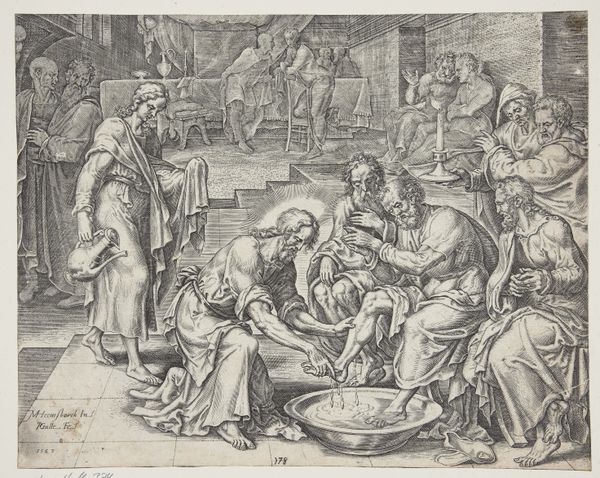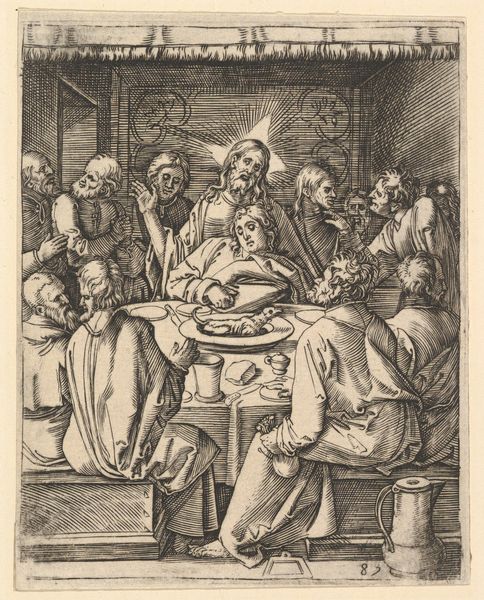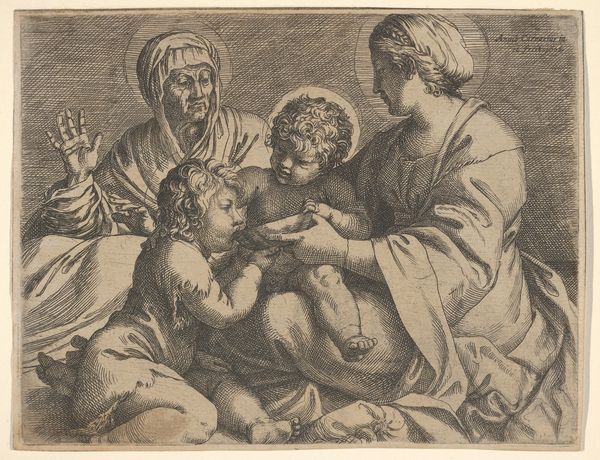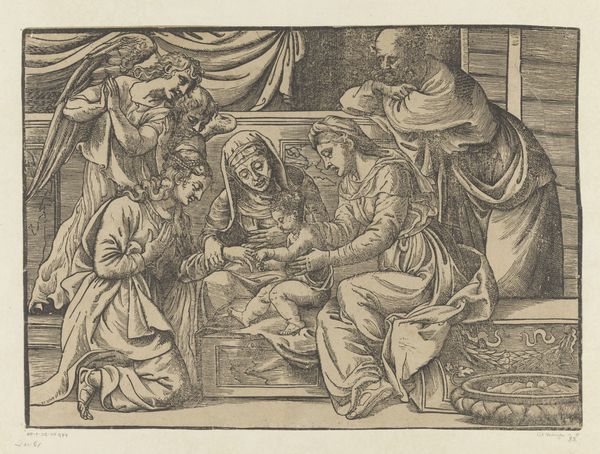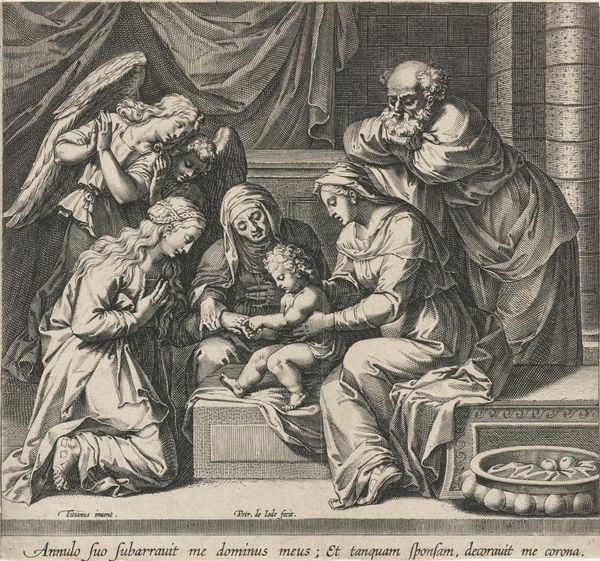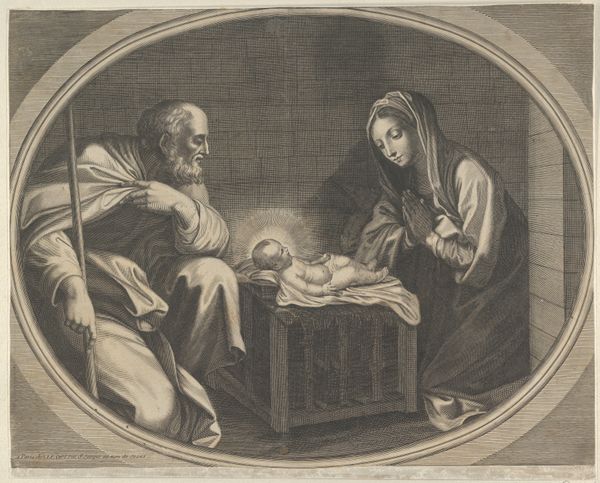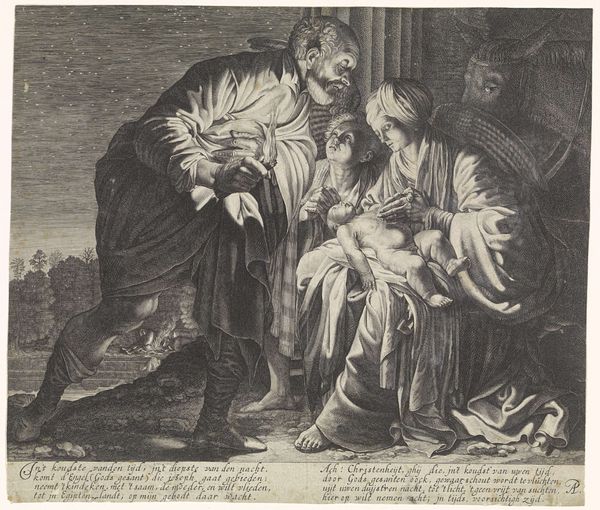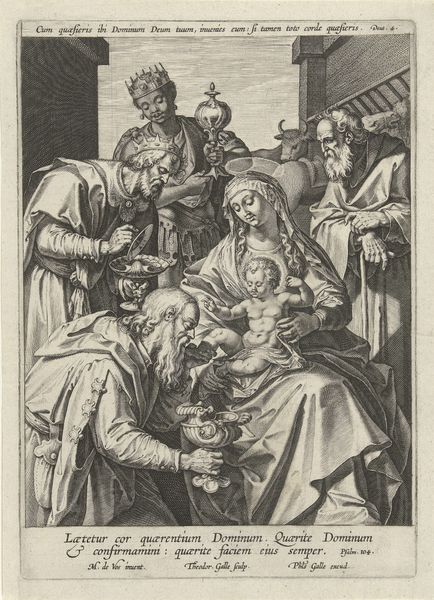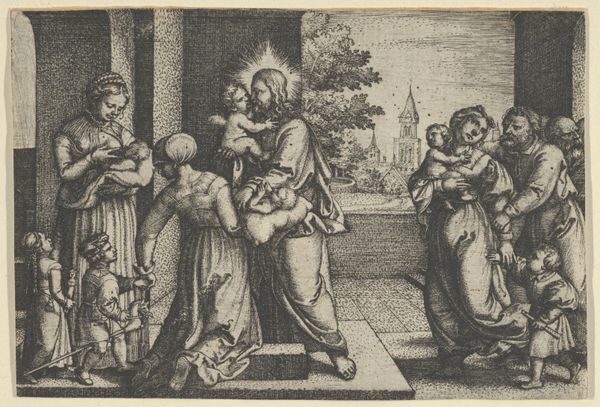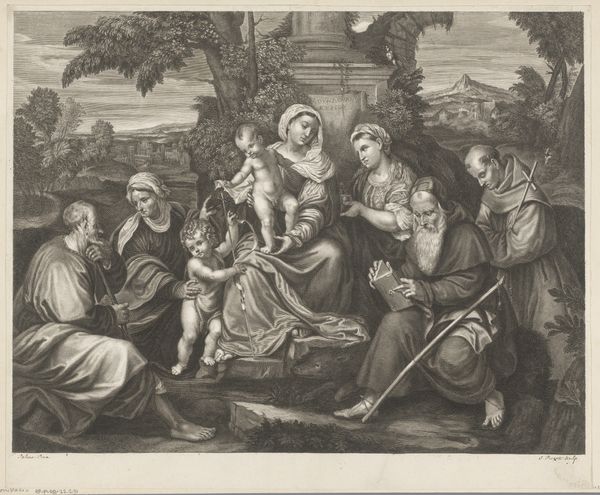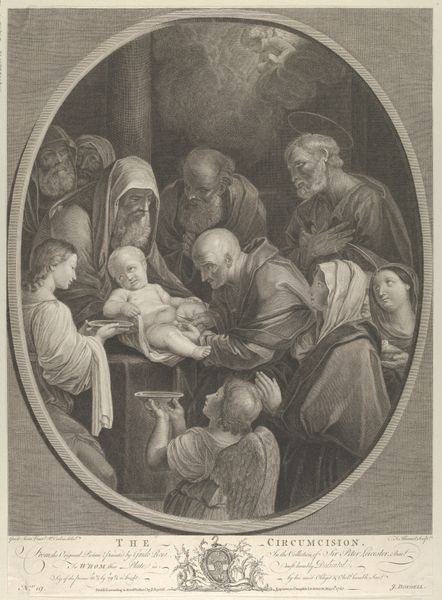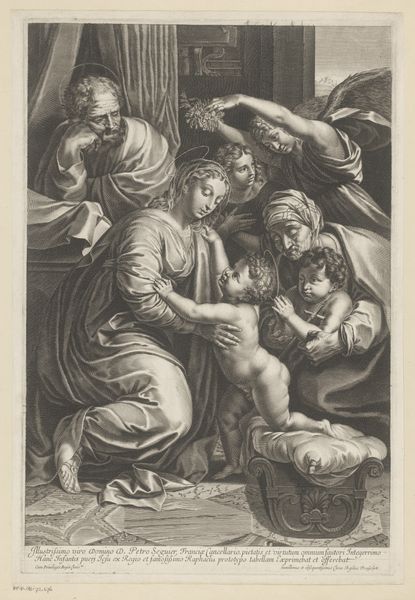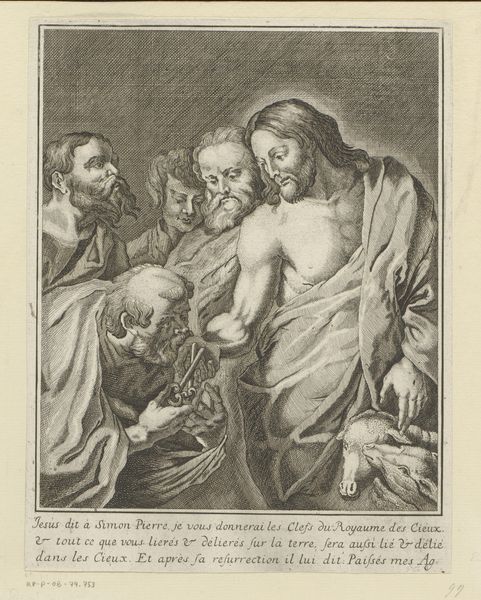
print, engraving
#
baroque
# print
#
figuration
#
history-painting
#
engraving
Dimensions: height 293 mm, width 382 mm
Copyright: Rijks Museum: Open Domain
Jeremias Falck created this print of the Presentation of Christ in the Temple, sometime in the 17th century. It's made using the technique of etching, meaning that the artist would have covered a metal plate with a waxy ground, scratched away the image, and then bathed the plate in acid. The acid bites into the metal where it’s been exposed, creating fine lines that hold ink. When pressed onto paper, these lines create the image you see. Notice how Falck uses hatching and cross-hatching to build up tone, creating a sense of depth and shadow. The quality of the final print depends entirely on the skill and labor of the artist, and his handling of the tools involved. Etchings like this were relatively easy to produce and reproduce, making images more accessible to a wider audience, at a time before photography. This print beautifully illustrates how a combination of technical skill and artistic vision can result in powerful and communicative imagery, blurring the boundaries between craft and fine art.
Comments
No comments
Be the first to comment and join the conversation on the ultimate creative platform.
